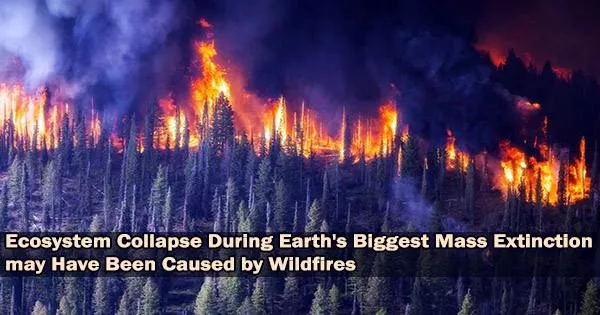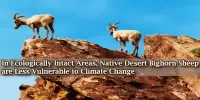An ecosystem is a region where a bubble of life is created by plants, animals, and other organisms interacting with the weather, environment, and other factors. Abiotic variables, or nonliving components, coexist with biotic components in ecosystems. Plants, animals, and other species are biotic factors. Abiotic factors include rocks, temperature, and humidity.
Nearly all species on Earth were exterminated during the end-Permian mass extinction (252 million years ago), which also caused the collapse of entire ecosystems, according to research from University College Cork (UCC) and the Swedish Museum of Natural History. The researchers found that this most destructive of mass extinctions caused a dramatic increase in wildfire activity.
Extreme heat and dryness caused wildfires to spread across broad areas that were previously perennially wet, and this was facilitated by the rapid greenhouse gas emissions from volcanoes. These wetlands became significant sources of atmospheric carbon rather than carbon sinks, accelerating the rapid warming trend. The research is published in PALAIOS today.
Ecosystems can vary greatly in size. Earth’s surface is made up of a network of interconnected ecosystems. In a bigger biome, ecosystems are frequently interconnected. Large areas of land, water, or atmosphere are known as biomes. For instance, biomes include things like forests, ponds, reefs, and tundra.
The potential for wildfires as a direct extinction driver during hyperthermal events, rather than a symptom of climatic changes deserves further examination. Unlike the species that suffered the mass extinctions of the past, we have the opportunity to prevent the burning of the world’s carbon sinks and help avoid the worst effects of modern warming.
Dr. Chris Mays
Fossils examined in eastern Australia & Antarctica
The Sydney & Bowen basins in eastern Australia and Antarctica (Lambert Graben) were examined for fossil plant and charcoal records, and the researchers found that the wetlands were frequently disturbed by fires before the extinction event. The plants had developed a variety of fire-resistance strategies in response.
A wildfire is an unauthorized fire that breaks out in a wilderness setting like a forest, meadow, or prairie. Wildfires can occur anytime, anywhere, and are frequently brought on by human action or a natural occurrence like lightning. In 50% of wildfires recorded, it is not known how they started.
Even these fire-adapted plants appear to have been pushed past a tipping point during the extinction event, from which the entire ecosystem was unable to recover for millions of years due to the severe climate change and peak in fire activity.
“Sifting through the fossil plant records of eastern Australia and Antarctica, we found high abundances of burnt, or charcoalified, plants throughout the late Permian Period. From this high baseline, charcoal abundances reached a prominent peak right at the top of the last Permian coal beds, indicating a major but short-lived increase in wildfires. This was followed by low charcoal for the next three million years of the Early Triassic Period. It was an end-Permian burnout, followed by an Early Triassic depression,” comments Dr. Chris Mays, Lecturer in Paleontology at University College Cork (UCC) and lead author of the study.
Extremely dry circumstances, such as a drought, and strong winds both enhance the risk of wildfires. Transportation, communications, power and gas utilities, as well as the water supply, can all be affected by wildfires. They also result in the loss of resources, crops, people, animals, and property, as well as a decline in air quality.
Earth on a path to a similar mass extinction?
The researchers highlight that in today’s world, wildfires have caused shocking mass animal die-offs in several regions around the world (e.g. California 2018, 2020, Australia 2019-20).
In the same period, protracted droughts and a rise in wildfires have occurred in normally moist habitats like the huge Pantanal wetlands of South America and the Indonesian peat forests. These significant “carbon sinks,” or areas where the atmosphere’s carbon is naturally captured, are essential in the fight against global warming.
Without these areas of carbon capture, the world can continue to be intolerably heated for hundreds of millennia, as the fossil record demonstrates.
“The potential for wildfires as a direct extinction driver during hyperthermal events, rather than a symptom of climatic changes deserves further examination. Unlike the species that suffered the mass extinctions of the past, we have the opportunity to prevent the burning of the world’s carbon sinks and help avoid the worst effects of modern warming,” comments Dr. Mays.
















